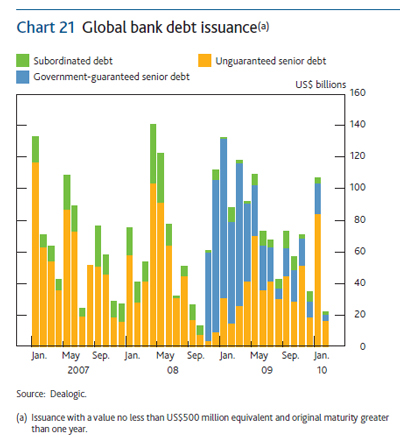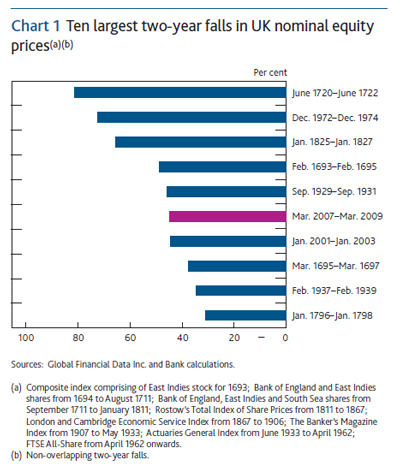An Assiduous Reader writes in and says:
My background is in insurance and mathematics {now retired at 56}. I am intrigued by the perpetual preferred shares offered by quality institutions rated Pfd 1 or 2 {about 12 to 15 issuers}. With the higher yield and the Canadian dividend tax credit, I am comparing this investment strategy to purchasing a joint life-time annuity with a guaranteed period of 25 years. On the surface, the rate of return is about 6% annually. I recognize the annuity has a return of capital component.
So here’s my riddle…why wouldn’t I buy the quality perpetual preferreds for the ongoing income whereby I can transfer the shares to my spouse [or vice versa] and, likewise, to our children in perpetuity – unlike the annuity that would cease upon on our last-to-die joint death and/or 25 years. The fluctuation in the capital value of my preferreds would not concern me – anymore than the annuity where the entire capital is ‘lost’ upon the initial purchase.
Lastly, if I wanted to ‘boost’ my yield on my preferred portfolio, I would re-invest the dividends for a few years to a level of income that I would like [eg 10%/year} and then that would be the rate of return in perpetuity. If this 10%/year is approximately the long-term equity stock market return, why would I even bother taking on the extra risk with equities and the aggravation of trying to select the appropriate securities for my portfolio.
If this makes sense, then my entire investment strategy should be with perpetual preferreds. {I have other significant assets}
Maybe I am missing something so, thus, my email to you. This ‘riddle’ is starting to keep me up at night!
I am not particularly comfortable in this field of investment decision-making, so take everything below with a grain of salt and do your own research. But I’ll give it a stab! Any corrections or elaborations will be gratefully received.
But first, let me say that the Inquiring Reader is on the right track. Preservation of Income – as opposed to Preservation of Capital – is what preferred shares are all about.
Morningstar publishes life annuity rates; a sixty-year-old male is looking at an annual payment of about 7.2% of principal; at 70 it’s about 9%; and at 75 it’s about 10.8%.
According to Standard Life, the income is taxed as regular income:
Registered
The annuity payment is fully taxable
Non-registered
Only the interest portion is taxable
The taxable portion can be reported on a “prescribed” or “non-prescribed” basis
- Prescribed: level taxable portion each year
- Non-prescribed: taxable portion changes each year (interest reported each year reduces)
The prescribed taxation basis is attractive to taxpayers as it allows for the deferral of taxes. It is regulated and can only be used with specific types of annuities. All other annuities must be on a non-prescribed taxation basis.
To estimate how much of the annuity payment is return of capital, I used the Canadian Business Life Expectancy Calculator with the following data:
| Life Expectance Calculations | |||
| Data Required | Age 60 | Age 70 | Age 75 |
| Age | 60 | 70 | 75 |
| Sex | Male | ||
| Height | 6’0″ | ||
| Weight | 190 lbs | ||
| Frame | Small | ||
| Physically Active? | Somewhat | ||
| Level of Stwess | Low | ||
| Smoking | Less than 2 packs a day | ||
| Drinking Habits | Never more than three drinks | ||
| Eat Saturated Fats | How the hell should I know? I’m a GUY, ferchrissake. Call it once or twice a week | ||
| Elevated cholesterol | No | ||
| Normal blood pressure | Um … when talking about regulators and politicians? Or other times? Call it yes | ||
| Two subquestions skipped | |||
| Parents lived long? | Yes | ||
| Siblings with bum tickers? | No | ||
| Accidents or speeding tickets? | No | ||
| Post-Secondary | Yes | ||
| Not poor? | yes | ||
| Safety belt? | Even in bed! | ||
| Estimated Lifespan | 80 | 83 | 85 |
So at age 60, we’ll say 20-years to go; 13 years to go at age 70; and 10 years left at age 75.
Some quick work with MS-Excel, with the assumption that the capital is all gone at the end of the annuity results in required yields of 3.6%, 2.3% and 1.4%. We’ll summarize this in another table:
| Annuity Rates and Required Return | |||
| Age | Years Left | Annuity Rate | IRR |
| 60 | 20 | 7.2% | 3.6% |
| 70 | 13 | 9.0% | 2.3% |
| 75 | 10 | 10.8% | 1.4% |
Holy smokes! I’ve definitely made a mistake somewhere … could be the assumptions, the math, or the fact that I didn’t go into the insurance business.
However, before we leap wholeheartedly into PerpetualDiscounts as life-annuity substitutes, let’s take a look at the risks:
Credit Risk: Annuities are a far more senior claim on the insurers than preferred shares, especialy since – as far as the insurers are concerned – an annuity is a claim on the operating companies assets, while a preferred share is a claim on the parent. It is entirely possible that in times of trouble, a preferred shareholder could get nothing while an annuity holder could get paid in full … even in the absence of a government bail-out.
Return Order Risk: An annuity withdraws principal on a steadily increasing basis – even if that basis has to be calculated on a post hoc basis. Thus, if we are performing a direct comparison, we also have to withdraw principal from our preferred share portfolio on a steady basis. This means we are exposed to Order of Returns Risk. And that’s even before we consider:
Principal Evaporation Risk: With an annuity, the insurance company takes the risk that you will last longer than expected, and covers it with their chances that other clients will make up for it. With a preferred share portfolio – or any investment portfolio – you’re the one stuck with that risk.
Call Risk: Say preferred share yields fall dramatically and your shares get called. This will definitely foul up your long-term returns because your returns after the call date will reflect the coupon of your PerpetualDiscount, and not the initial yield – and that’s even before you account for frictional costs of the process.
As noted in the comments, this is overstated. Your yield will go down but, to at least some extent, your capital will have increased on a call. However:
- There will be capital gains tax to pay
- There is no guarantee that suitable replacements will be available
- A call will normally take place when the issuer can refinance cheaper, so there will be a yield hit to reflect “cheaper”.
Tax Risk: The tax regime for dividends could change, eliminating at least some of the dividend advantage
Inflation Risk: This will be about the same for both strategies, but you do have the option to buy an indexed annuity, whereas there are no indexed preferred shares at present. At some point, a deeply discounted FixedReset with a microscopic spread against five-year Canadas might be functionally equivalent, but we don’t have any of those yet. Other floating rate perpetuals (Ratchet, FixedFloater, Floater) might be considered equivalent, but then you have basis risk (either prime or five-year Canadas vs. inflation) and extant non-FixedReset Floating Rate issues don’t have sterling credit quality.
All in all, the risks are significant, but the returns are certainly juicy. I would advise that annuities are good for the bare-bones-beans-on-a-hotplate portion of retirement income, while preferred shares – and other investments – provide the income that you spend in Florida.
There are probabily mistakes in the above – this is not a topic I spend a lot of time on. My job is to take the investor’s allocation to preferreds and do a better job with it than he could himself – not to decide on the allocation. Any commentary will be be appreciated.
Update: See also Lifetime Financial Advice: Human Capital, Asset Allocation, and Insurance, Ibbotson, Milevsky, Chen & Zhu, ISBN 978-0-943205-94-6
Update, 2010-3-17: See also the So you are going to buy an annuity. With what? discussion on Financial Webring Forum.
Update, 2010-3-17: Another good article is Annuity Analytics: How Much to Allocate to Annuities? by Moshe A. Milevsky.
Update, 2010-3-19: There’s a good table in Milevsky’s Annuitization: If Not Now, When?:
| Value of Unisex Mortality Credits: Assuming 40m/60f (static) Annuity 2000 Table at 6% net interest. |
|
| Age of Annuitant |
Spread Above Pricing Interest Rate (in Basis Points = 1/100 %) |
| 55 | 35 |
| 60 | 52 |
| 65 | 83 |
| 70 | 138 |
| 75 | 237 |
| 80 | 414 |
| 85 | 725 |
| 90 | 1256 |
| 95 | 2004 |
| 100 | 2978 |
| Source: The IFID Centre calculations | |
Update, 2010-3-25: Interesting conclusions and charts in Kaplan’s Asset Allocation with Annuities for Retirement Income Management

